#litteratura
Text
Said Taliban😎"Tiempo Antaño"
✍Mis manos vuelan al rededor de 🔔tus Campanas,
📜Tu amor está en tacto en mis
🖋partes más Sanas,
<•><•><•><•><•><•><•><•><•><•>
🍎Mis caricias Viandantes por tus ☕hospedas llanuras,
📜Las cuatro Estaciones
🖋descansan entre sus Montañas,
<•><•><•><•><•><•><•><•><•><•>
🍎Piel si estremece como sismos ☕Terrenales,
📜Aguas Benditas recorren sus
🖋Manantiales,
<•><•><•><•><•><•><•><•><•><•>
💋Besos con aroma de Pétalos mi ☕de vuelven a la Vida,
📜Sus ojos arden de deseos por mí 🖋en una mirada Tímida,
<•><•><•><•><•><•><•><•><•><•>
🍎La melancolía hace caer las
☕hojas de los Cerezos,
📜El otoño me visita y toda vía
🖋pienso en sus Labios,
<•><•><•><•><•><•><•><•><•><•>
🍎Una Damisela que no se repite ☕Enel tiempo Antaño,
📜Camina en mi interior por el
🖋estrecho Andamio,
<•><•><•><•><•><•><•><•><•><•>
🍎Deja pasos de silencio hacia el ☕Horizonte de Cornalina,
📜Viendo tu bello rostro recaído
🖋cada mañana,
<•><•><•><•><•><•><•><•><•><•>
🍎Acostada ami lado en una
☕Romántica Escena,
📜Una taza de Café tú sonrisa, y el 🖋Rubor de la Manzana,
<•><•><•><•><•><•><•><•><•><•>
🍎Tu amor es quien puebla este
☕Corazón indígena,
📜Romancé literario en una Frase 🖋Se Culmina.
<•><•><•><•><•><•><•><•><•><•>
♡•~•~•~•~{Said}~•~•~•~•♡
✍🏻 #said_taliban_norteño⌛
#Arte#arte contemporanea#Litteratura#poesiacontemporanea#poesiaitaliana#Scrritura#poesiaitalianacontemporanes#scrivere#poetry#Sonetos
1 note
·
View note
Photo

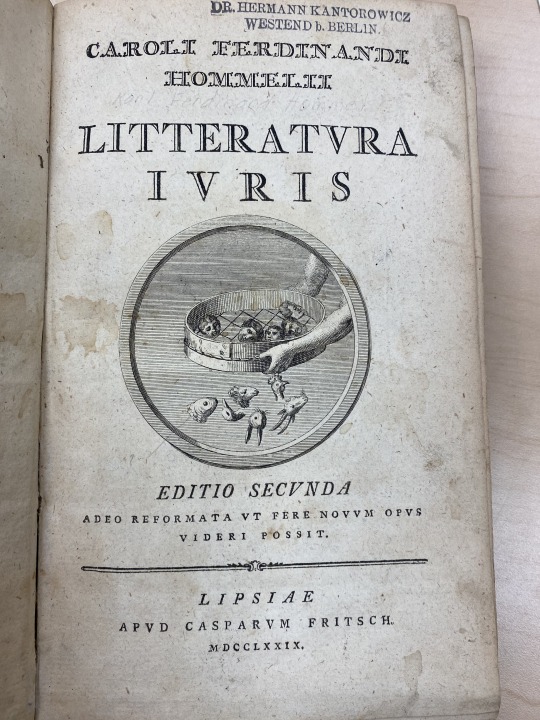
Must sort the heads using the special sieve...
A wonderfully strange title page from Caroli Ferdinandi Hommelli Litteratura Iuris.
#riesenfeld center#umn law#university of minnesota#umn law library#special collections#rare books#18th century#german law#legal history#kantorowicz collection#woodcut illustration#title page#book illustration
197 notes
·
View notes
Quote
La sombra que proyecta la lengua hablada es la literatura. Entonces la lengua hablada se desvanece verdaderamente en el aire. Las mandíbulas permanecen verdaderamente inmóviles. Los dientes no se abren. El interlocutor se ha vuelto ausente. El sonido es reabsorbido. El oído es inútil. La reticencia, la negación a hablar, el silencio de la lengua materna, el silencio de la lengua muerta, el silencio propio de la lengua escrita, reúnen una misma sustancia negativa. Entonces concebí la lectura silenciosa como la música extrema.
Pascal Quignard, «XXV. Litteratura» en El niño de Ingolstadt. Último reino X. Traducción de Silvio Mattoni.
12 notes
·
View notes
Text
Convivio, I, IX
"Ché la bontà dell'animo, la quale questo servigio attende, è in coloro che per malvagia disusanza del mondo hanno lasciata la litteratura a coloro che l'hanno fatta di donna meretrice; e questi nobili sono principi, baroni, cavalieri e molt'altra nobile gente, non solamente maschi ma femmine, che sono molti e molte in questa lingua, volgari, e non litterati".
* Dante, Convivio, I, IX
Dante non scrive per i dotti, filosofi, chierici o meno, che cercano solo denaro e posizione... e hanno fatto della letteratura una puttana.. egli scrive in italiano perché NON VUOLE servire ai dotti... ma ai NON DOTTI, che sono ancora capaci di nobile slancio e di nobile insegnamento hanno bisogno... uomini e donne...
0 notes
Text

#love#amore#quote#frase#citazione#citation#dante#Beatrice#relationship#relazione#lettera#litteratura
26 notes
·
View notes
Quote
Si un hombre atravesara el Paraíso en un sueño, y le dieran una flor como prueba de que había estado allí, y si al despertar encontrara esa flor en su mano… ¿entonces, qué?
Jorge Luis Borges, La Flor de Coleridge
0 notes
Text
“The World’s Literature”

Literature refers to a book to a written works or books that has an extremely lasting artistic merit. It usually means works of poetry and prose that are especially well written. It is also defined as writings proposed by people with various language. It is very important not only in today’s society but also in past generations. It helps us in critical thinking, writing, reading, and understanding. It also help to share ideas or information about our history and different cultures or languages. It is also important since it will enlighten and acknowledge about the world we are living in. Etymologically, the term derives from Latin litaritura or litteratura that means “writing formed with letters,” even though some definitions include spoken or sung texts. Some examples of literature are prose, poetry, novels, drama, short stories, and more.
It is said that literature’s definition depends on varid of time. In Western Europe prior to the 18th century, literature denoted all books and writing. Then, during the Romantic Period, a more restricted sense of the term emerged that emphasize the idea that "literature" was "imaginative" writing.
https://simple.wikipedia.org/
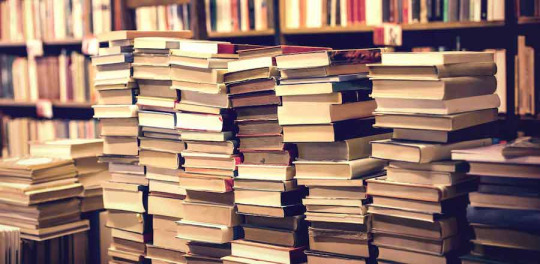
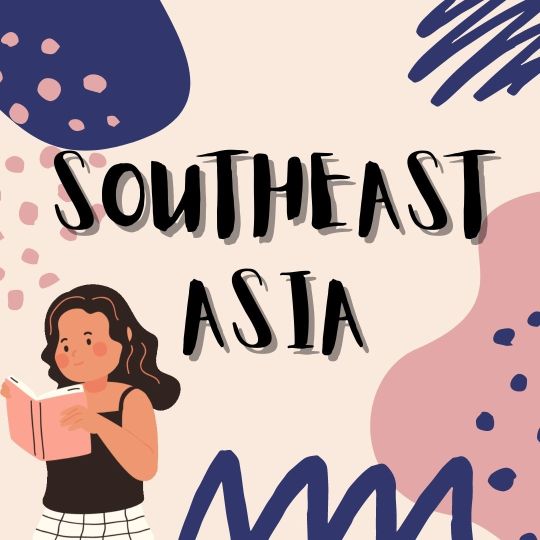
Southeast Asia is composed of eleven countries of impressive diversity in religion, culture and history: Brunei, Burma (Myanmar), Cambodia, Timor-Leste, Indonesia, Laos, Malaysia, the Philippines, Singapore, Thailand and Vietnam. Southeast Asia was known as mainland of buddhism. Its influence was a major source of traditional literature in the Buddhist countries of Southeast Asia. Vietnam, under Chinese rule, was influenced by Chinese and Indian literature. Indonesia and Malaysia were influenced by Islam and its literature. All of the countries, except for Thailand, underwent a colonial experience and each of the countries reflects in its literature and in other aspects of its culture the influence of the colonizing power, including the language of that power. On the other hand, until now poetry was the most famous form of traditional literature in Southeast Asia for centuries. However, through increased acquaintance with Western poetry, the poets of Southeast Asia broke the bonds of tradition and began to imitate various poetic types. From the point of view of its “classical” literatures, Southeast Asia can be divided into three major regions: (1) the Sanskrit region of Cambodia and Indonesia; (2) the region of Burma where Pali, a dialect related to Sanskrit, was used as a literary and religious language; and (3) the Chinese region of Vietnam.


“MYANMAR”
The literature of Myanmar spans over a millennium. Burmese literature was historically influenced by Indian and Thai cultures, as seen in many works, such as the Ramayana wgich we all knew that it is very popular. Burmese literature has historically been an extremely important aspect of Burmese life steeped in the Pali Canon of Buddhism. In addition, Burmese children were educated by monks in monasteries in towns and villages. The earliest forms of Burmese literature were on stone engravings which is also called “kyauksa” for memorials or for special occasions such as the building of a temple or a monastery. Later, palm leaves were used as paper (peisa), which resulted in the rounded forms of the Burmese alphabet.
Monks is said to be influencial in improving Burmese literature. During this time, Shin Maha Thila Wuntha wrote a chronicle on the history of Buddhism. A contemporary of his, Shin Ottama Gyaw, was famous for his epic verses called Tawla that revelled in the natural beauty of the seasons, forests and travel. Monks remained powerful in Burmese literature, compiling histories of Burma. Kyigan Shingyi (1757-1807) wrote the Jataka Tales incorporating Burmese elements, including the myittaza. When Burma became a colony of British India, Burmese literature continued to flourish. English literature was still relatively inaccessible although both English and Burmese were now taught in schools.
https://en.wikipedia.org/wiki/Burmese https://www.theatlantic.com/magazine

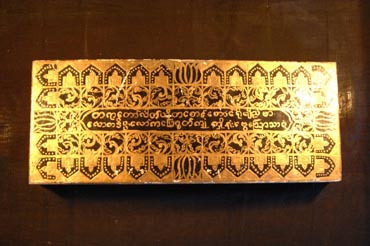
“INDONESIA”
Indonesia is centrally-located along ancient trading routes between the Far East, South Asia and the Middle East, resulting in many cultural practices being strongly influenced by a multitude of religions, including Buddhism, Christianity, Confucianism, Hinduism, and Islam, all strong in the major trading cities. Prose and poetry wrote in Javanese, Sundanese, Malay, and more, refers to a literature in Indonesia. Indonesian literature can refer to literature produced in the Indonesian archipelago. It is also used to refer more broadly to literature produced in areas with common language roots based on the Malay language (of which Indonesian is one scion). This would extend the reach to the Maritime Southeast Asia, including Indonesia, but also other nations with a common language such as Malaysia and Brunei, as well as population within other nations such as the Malay people living in Singapore. Indonesian literature is not widely known compared to works from other countries. Writings of Indonesian authors do not get translated as much as works by other authors of “Third World” countries. Literary production remained consistently high even during the repressive era of Suharto. The styles and characteristics of Indonesian literature change from time to time. They sometimes follow the political dynamics of the country and the region. In the colonial era, local authors were heavily inspired by Western novels and poetry. Many writers produced adaptations of Western fiction in their local setting or even “plagiarised” works produced by their Western counterparts. However, realism remains to be the dominant style, although sometimes it also blends with some kind of romanticism – a nostalgia for the lost past – and a sense of disillusionment that replaces it.
https://en.wikipedia.org/

“CAMBODIA”
Cambodian or Khmer literature has a very ancient origin. Like most Southeast Asian national literatures its traditional corpus has two distinct aspects or levels: The written literature, mostly restricted to the royal courts or the Buddhist monasteries. The oral literature, which is based on local folklore. On the past centuries, their literature was proposed or transmitted orally. The earliest written works took the form of Sanskrit verses inscribed on palm leaf manuscripts during the Angkorian era (9th-13th centuries). By the 11th century Buddhist treatises and jataka were being produced on a regular basis. From the 17th century onwards poems known as chbap (‘codes of conduct’) were written by Buddhist monks to teach novices about morality. These poems, written in the precise metre demanded of Khmer poetry with colourful compounds and complex rhyme patterns, subsequently became set texts in wat schools. Cambodian literature based on the contemporary world, though still inspired by classical themes, began to emerge in the mid-19th century. However, not until 1908 – with the publication of Pantan Ta Mas (‘The Recommendations of Grandfather Mas’) – did the Khmer script appear in print. On the other hand, between 1938 and 1972 over 1,000 novels were printed, ranging from detective and adventure tales to mysteries, historical novels and love stories. After independence, Cambodian literature was added to the national educational curriculum. With the establishment of the Khmer Writers’ Association in 1956, writers were recognised as making a cultural contribution in their own right and the institutionalisation of Khmer literature appeared complete. In today’s modern era, most Cambodian writers cannot live on the proceeds of their writing. In recent years, well-known writers have turned their hand to writing for television and video, where the rewards are more certain. However some formal encouragement for novels and other creative writing does exist.
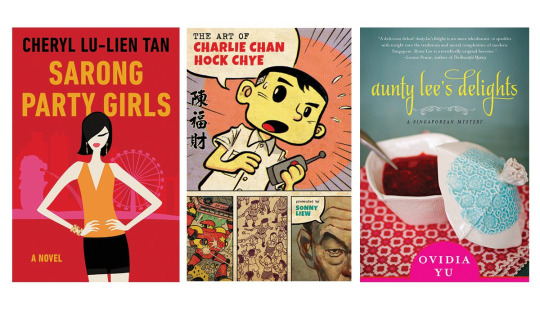
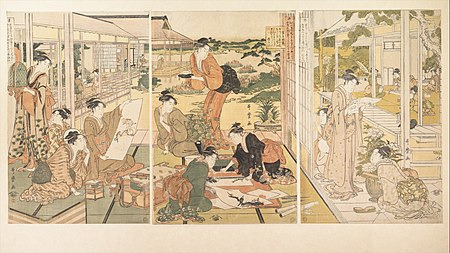

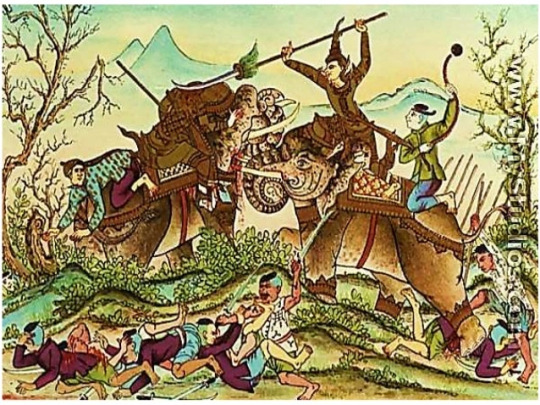
https://vietlongtravel.com/news
“VIETNAM”
Vietnamese literature has been fed by two great tributaries: the indigenous oral literature and the written literature of Chinese influence. The oral poetry tradition is purely native. Vietnamese literature is literature, both oral and written, created largely by Vietnamese-speaking people, although Francophone Vietnamese and English-speaking Vietnamese authors in Australia and the United States are counted by many critics as part of the national tradition. The Vietnamese literary tradition has evolved through multiple events that have marked the country’s history. New literary movements can usually be observed every ten years but in the last century, Vietnamese literature underwent several literary transitions. The Vietnamese literature has been rich in folklore and proverbs; tales that have been handed down from generation to generation, gradually becoming valuable treasures. The folk literature grows during the processes of activity, labour, construction and struggle of the people. It is the soul and vital power of the nation. The bond between fighting men is a theme in all the literature about Vietnam. That devotion, the key to survival, becomes the reason for fighting.

https://dnqtravel.com/vietnam https://www.britannica.com/
“THAILAND”
Thai literature was heavily influenced by the Indian culture and Buddhist-Hindu ideology since the time it first appeared in the 13th century. Thailand's national epic is a version of the Ramayana called the Ramakien, translated from Sanskrit and rearranged into Siamese verses. Another major Thai literary figure was Sunthon Phu (1786-1855), a poetic genius and well-beloved commoner. Sunthon Phu’s enduring achievement (apart from his legendary personal adventures) was to write superbly well in common language about common feelings and the common folk. Easily understood by all classes, his work became widely accepted. His major works were Phra Aphai Mani, a romantic adventure, and nine Nirats mostly written during a pilgrimage, associating romantic memories with the places he visited in central and eastern Thailand. Moving into the modern age about 1900 onward, most of the Thai readers are well acquainted with the work of Dokmaisod whose real name is M.L. Boobpha Nimmanhaemindha. She was a novelist in the pioneering age. Her best-known works were for example, Phu Di, Nung Nai Roi, Nit, Chaichana Khong Luang Naruban, etc. Many of her works have been assigned as books for external reading for students at the secondary and tertiary levels of education today.
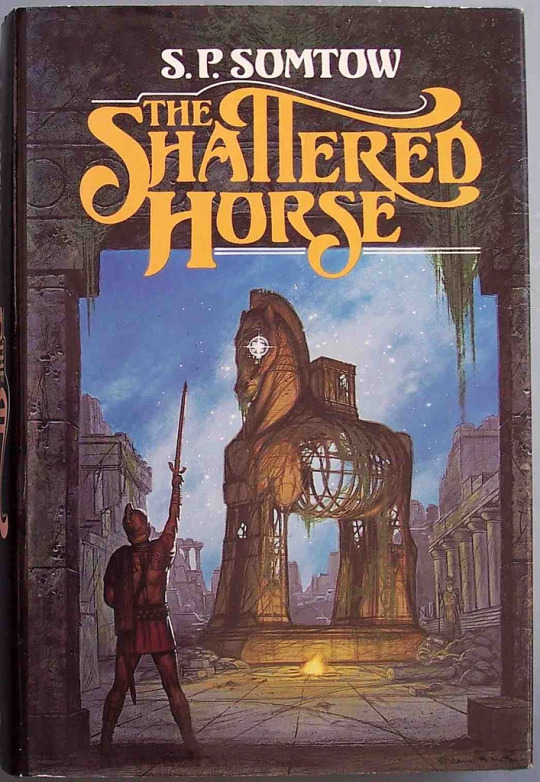

https://vietlongtravel.com/news/thailand-fact
“PHILIPPINES”
As demonstrated by The Child of Sorrow (1921) written by Zoilo Galang – the first Filipino novel in English – the literary output began with the articulation of the Philippine experience. The early writings in English were characterized by melodrama, unreal language, and unsubtle emphasis on local color. The Philippines is unique for having important works in many languages. The most politically important body of Philippine literature is that which was written in Spanish. The Propaganda movement, which included Jose Rizal agitated for independence in the 1880's and 1890's, writing exclusively in Spanish. Literatures in the Philippines has a lot of lessons that you can learn and apply to, for your daily livings. There are various Filipino writers and interpreters who define literature in their views as citizens of the Philippines. These included Jose Arrogante, Zeus Salazar, and Patrocinio V. Villafuerte, among others. Literacy is for all Filipinos. It is a kind of valuable remedy that helps people plan their own lives, to meet their problems, and to understand the spirit of human nature. A person’s riches may be lost or depleted, and even his patriotism, but not literature. One example is the advancement of other Filipinos. Although they left their homeland, literature was their bridge to their left country. The main themes of Philippine literature focus on the country's pre-colonial cultural traditions and the socio-political histories of its colonial and contemporary traditions. Some of the famous Philippine literatures are: Noli Me Tángere by Dr. José Rizal, Florante at Laura by Francisco Balagtas, Mga Ibong Mandaragit by Amado V. Hernandez, The Woman Who Had Two Navels by Nick Joaquin, Po-on A Novel by F. Sionil Jose, Banaag at Sikat by Lope K. Santos, Ilustrado by Miguel Syjuco, Dekada '70 by Lualhati Bautista.


https://en.wikipedia.org/wiki/Philippine https://www.hisour.com/philippine
“LAOS”
Lao literature spans a wide range of genres including religious, philosophy, prose, epic or lyric poetry, histories, traditional law and customs, folklore, astrology, rituals, grammar and lexicography, dramas, romances, comedies, and non-fiction. Most works of Lao literature have been handed down through continuous copying and have survived in the form of palm-leaf manuscripts, which were traditionally stored in wooden caskets and kept in the libraries of Buddhist monasteries. The act of copying a book or text held deep religious significance as a meritorious act. The emphasis in writing was to convey Theravada Buddhist thought, although syncretism with animist beliefs is also common, religious and philosophical teachings. Individual authorship is not important; works were simply attributed with a perceived religious origin raising its status in the eyes of the audience. The Lao period of classical literature began during the Lan Xang era, and flourished during the early sixteenth century. The primary cultural influence on Lan Xang during this period was the closely related Tai Yuan Kingdom of Lanna.
The epic of Sin Xay was composed by the Lao poet Pangkham during the reign of King Sourigna Vongsa and is regarded as the seminal work of Lao epic poetry. The central message is one that unchecked desires will inevitably lead to suffering. The Thao Hung Thao Cheuang epic is regarded by literary critics and historians as one of the most important indigenous epic poems in Southeast Asia and a Lao language literary masterpiece for artistic, historical, and cultural reasons. The established authors such as Outhine Bounyavong, Dara Viravongs, Pakian Viravongs, Douangdeuane Viravongs and Seree Nilamay resumed their literary activities alongside revolutionary writers such as Phoumi Vongvichit, Souvanthone Bouphanouvong, Chanthy Deuansavanh, Khamlieng Phonsena and Theap Vongpakay. They have since been joined by a younger generation of writers. In the decade following the communists' victory in 1975, the major themes treated in literature were the virtues of the communist revolution and the great strides Lao society was taking under communist party leadership.
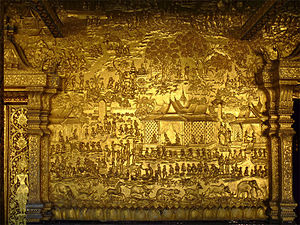

https://www.britannica.com/art/Lao-literature https://en.wikipedia.org/wiki/Literature_of_Laos
“SINGAPORE”
The literature of Singapore comprises a collection of literary works by Singaporeans. It is written chiefly in the country's four official languages: English, Malay, Standard Mandarin and Tamil. While Singaporean literary works may be considered as also belonging to the literature of their specific languages, the literature of Singapore is viewed as a distinct body of literature portraying various aspects of Singapore society and forms a significant part of the culture of Singapore. Literature in all four official languages has been translated and showcased in publications such as the literary journal Singa, that was published in the 1980s and 1990s with editors including Edwin Thumboo and Koh Buck Song, as well as in multilingual anthologies such as Rhythms: A Singaporean Millennial Anthology Of Poetry (2000), in which the poems were all translated three times each into the three languages. Since the nation-state sprang into being in 1965, Singapore literature in English has blossomed energetically, and yet there have been few books focusing on contextualizing and analyzing Singapore literature despite the increasing international attention garnered by Singaporean writers. This volume brings Anglophone Singapore literature to a wider global audience for the first time, embedding it more closely within literary developments worldwide. Singaporean writers are producing work informed by debates and trends in queer studies, feminism, multiculturalism and social justice work which urgently calls for scholarly engagement. The endeavour to establish this identity is echoed in the literature through the themes they raise.
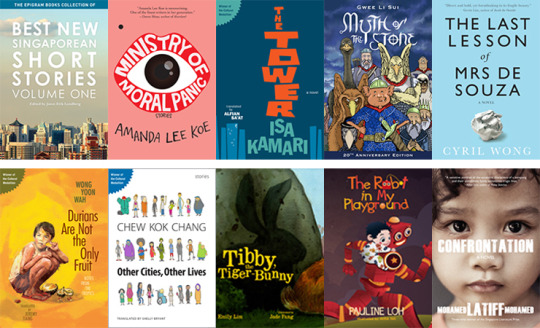
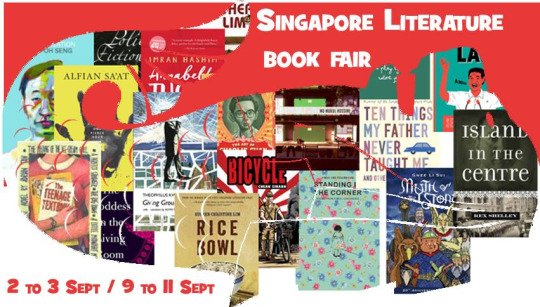
https://en.wikipedia.org/wiki/Singaporean https://www.lifestyleasia.com/sg/culture/art-design
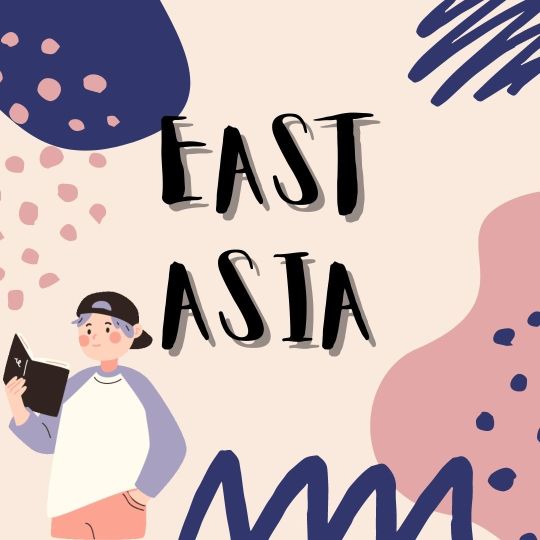
The modern states of East Asia include China, Hong Kong, Japan, Macau, Mongolia, North Korea, South Korea, and Taiwan. The East Asian states of China, North Korea, South Korea and Taiwan are all unrecognized by at least one other East Asian state due to severe ongoing political tensions in the region, specifically the division of Korea and the political status of Taiwan. Hong Kong and Macau, two small coastal quasi-dependent territories located in the south of China, are officially highly autonomous but are under de jure Chinese sovereignty. China, Korea, and Japan, however, have been uniquely linked for several millennia by a common written language and by broad cultural and political connections that have ranged in spirit from the uncritically adorational to the contentious.
https://en.wikipedia.org/wiki


“CHINA”
Chinese literary works include fiction, philosophical and religious works, poetry, and scientific writings. The dynastic eras frame the history of Chinese literature and are examined one by one. The grammar of the written Classical Language is different than the spoken languages of the past two thousand years. The most important of these philosophical writings, as far as Chinese culture are concerned, are the texts known as The Five Classics and The Four Books. Chinese poetry, besides depending on end rhyme and tonal metre for its cadence, is characterized by its compactness and brevity. There are no epics of either folk or literary variety and hardly any narrative or descriptive poems that are long by the standards of world literature. Chinese poetry, besides depending on end rhyme and tonal metre for its cadence, is characterized by its compactness and brevity. Not only was the Chinese script adopted for the written language in these countries, but some writers adopted the Chinese language as their chief literary medium, at least before the 20th century. On the other hand, the line of demarcation between prose and poetry is much less distinctly drawn in Chinese literature than in other national literatures. Chinese literary works include fiction, philosophical and religious works, poetry, and scientific writings. The dynastic eras frame the history of Chinese literature and are examined one by one. The grammar of the written Classical Language is different than the spoken languages of the past two thousand years. Water Margin, Journey to the West, Romance of the Three Kingdoms and Dream of the Red Chamber; these four novels form the core of Chinese classical literature and still inform modern culture.

https://www.britannica.com/
“JAPAN”
Japanese literature Earliest extant works are the Kojiki (712) and the Nihongi (720), which are histories written in Chinese characters used phonetically. The earliest recorded Japanese poetry is in the Manyoshu (760), which contains poems dating to the 4th century. Japanese literature has a long and illustrious history, with its most famous classic, The Tale of Genji, dating back to the 11th century. Often dark but full of humor, Japanese literature showcases the idiosyncrasies of such a culturally driven nation. Japanese literature expresses multiple components of Japanese people. It expresses their gratitude towards traditions and their sympathy towards nature. However, Japanese literature was not known outside of Japan until the 1900's.
Early works of Japanese literature were heavily influenced by cultural contact with China and Chinese literature, and were often written in Classical Chinese. Indian literature also had an influence through the spread of Buddhism in Japan. Eventually, Japanese literature developed into a separate style, although the influence of Chinese literature and Classical Chinese remained. Following Japan's reopening of its ports to Western trading and diplomacy in the 19th century, Western literature has influenced the development of modern Japanese writers, while they have in turn been more recognized outside Japan, with two Nobel Prizes so far, as of 2020. In translation many of the biggest and best names in Japanese literature are women, and these women are breaking boundaries and smashing literary traditions by tackling themes like societal structures and patriarchy, loss and isolation, and non-romantic love.

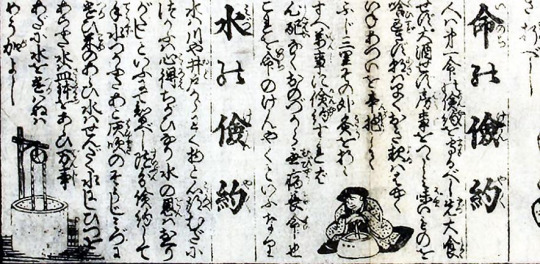
https://www.encyclopedia.com/literature https://en.wikipedia.org/wiki/Japanese
“KOREA”
Korean literature is the body of literature produced by Koreans, mostly in the Korean language and sometimes in Classical Chinese. For much of Korea's 1,500 years of literary history, it was written in Hanja. It is commonly divided into classical and modern periods, although this distinction is sometimes unclear. The stories are generally didactic, emphasizing correct moral conduct, and almost always have happy endings. Another general characteristic is that the narratives written by yangban authors are set in China, whereas those written by commoners are set in Korea. The Department of Korean Language and Literature aims at the creative inheritance and development of Korean culture through the study of Korean language and literature. There are four major traditional poetic forms: hyangga (“native songs”); pyŏlgok (“special songs”), or changga (“long poems”); sijo (“current melodies”); and kasa (“verses”). Other poetic forms that flourished briefly include the kyŏnggi style in the 14th and 15th centuries and the akchang (“words for songs”) in the 15th century. Korean poetry originally was meant to be sung, and its forms and styles reflect its melodic origins. The basis of its prosody is a line of alternating groups of three or four syllables, probably the most natural rhythm to the language. Korean prose literature can be divided into narratives, fiction, and literary miscellany. Narratives include myths, legends, and folktales found in the written records. The principal sources of these narratives are the two great historical records compiled during the Koryŏ dynasty: Samguk sagi (1146; “Historical Record of the Three Kingdoms”) and Samguk yusa (1285; “Memorabilia of the Three Kingdoms”). On the other hand, oral literature includes all texts that were orally transmitted from generation to generation until the invention of Hangul—ballads, legends, mask plays, puppet-show texts, and p’ansori (“story-singing”) texts. The origins of Korean literature can be traced back to an Old Stone Age art form that combined dance, music, and literature. Most Korean literature has the theme: Loyalty, Order, Relationships, Fear of alienation, and Fear of separation.

https://www.britannica.com/ https://en.wikipedia.org/wiki/Korean http://www.asianinfo.org/
“MONGOLIA”
Mongol literature has been greatly influenced by its nomadic oral traditions. The "three peaks" of Mongol literature, The Secret History of the Mongols, Epic of King Gesar and Epic of Jangar, all reflect the age-long tradition of heroic epics on the Eurasian Steppe. Mongolian literature, the written works produced in any of the Mongolian languages of present-day Mongolia; the Inner Mongolia Autonomous Region of China; the Uygur Autonomous Region of Xinjiang, China; and the Russian republics of Buryatiya and Kalmykiya. Written Mongolian literature emerged in the 13th century from oral traditions, and it developed under Indo-Tibetan, Turkic, and Chinese influence. The 20th century saw the publication of many new literary works in Mongolia as well as in Buryatiya and Kalmykia in Russia and in China’s Inner Mongolia and Dzungaria (in Xinjiang) regions. Until the middle of the 20th century, the Mongols and Buryats used Mongol script to write a language known as Classical, or Literary, Mongolian. The most significant work of pre-Buddhist Mongolian literature is the anonymous Mongqolun niuča tobča'an (Secret History of the Mongols), a chronicle of the deeds of the Mongol ruler Chinggis Khan (Genghis Khan) and of Ögödei, his son and successor.


https://www.britannica.com/art/Mongolian-literature https://en.wikipedia.org/wiki/Mongolian_literature
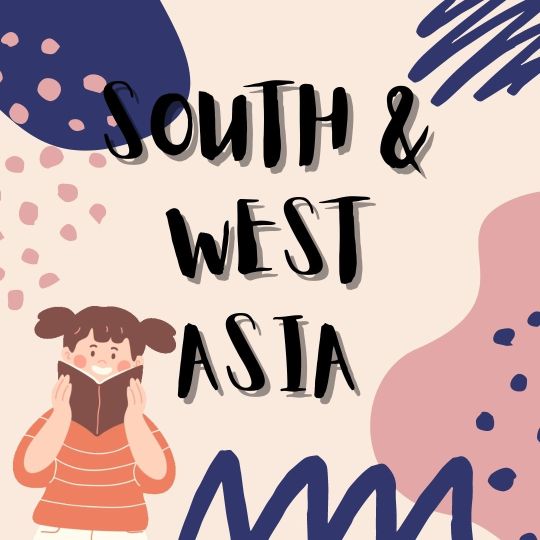
Twenty-first-century Middle Eastern (primarily Arabic, Persian, and Turkish) literature encompasses a rich variety of genres, whose maturation has profited from internal and external influences upon this literature over the past fourteen centuries. Middle Eastern Literatures, was launched in 1998 by former editorial board members of Journal of Arabic Literature. After considering the current state of research in the field, the Editors have decided a new forum for publication and discussion is required. Middle Eastern Literatures vigorously promotes the academic study of all Middle Eastern literatures. Work on literature composed in, for example, Persian, Turkish, post-Biblical and Modern Hebrew, Berber, Kurdish or Urdu language is welcomed.

“IRAN”
Iranian literature, body of writings in the Iranian languages produced in an area encompassing eastern Anatolia, Iran, and parts of western Central Asia as well as Afghanistan and the western areas of Pakistan. Literature in Iran encompasses a variety of literary traditions in the various languages used in Iran. Modern literatures of Iran include Persian literature (in Persian, the country's primary language), Azerbaijani literature (in Azerbaijani, the country's second largely spoken language), and Kurdish literature (in Kurdish, the country's third largely spoken language), among others. Iran's earliest surviving literary traditions are that of Avestan, the Iranic sacred language of the Avesta whose earliest literature is attested from the 6th century BC and is still preserved by the country's Zoroastrian communities in the observation of their religious rituals, and that of Persian. Persian literature differs from the common definition of “literature” in that it is not confined to lyrical compositions, to poetry or imaginative prose, because the central elements of these appear, to greater or lesser degrees, in all the written works of the Persians.
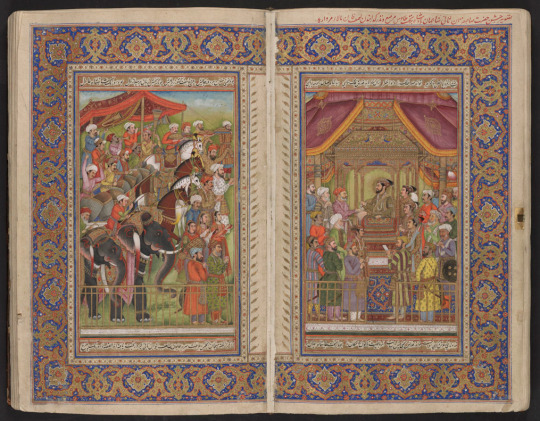
https://www.ancient.eu/Persian_Literature/ https://en.wikipedia.org/wiki/Literature_in_Iran
“SAUDI ARABIA”
Arabian Literature A written Arabic literature began to be known with the collect of Koran, the sacred book of Islam , in Arabia in 17th century A.D. with the spread of the Islamic faith into Asia, Africa and Europe, the Arabian language soon became a major world language. Arabic literature, the body of written works produced in the Arabic language. The tradition of Arabic literature stretches back some 16 centuries to unrecorded beginnings in the Arabian Peninsula. In Arabic the term for “literature” in the narrow English sense is adab, best translated by the French term belles-lettres (“beautiful letters”), which conveys the combination of the aesthetic and didactic elements found in adab more effectively than does the English term literature. The Arabic literary tradition began within the context of a tribal, nomadic culture. With the advent and spread of Islam, that tradition was carried far and wide during the course of the 7th to the 10th century. The recording of the earliest-known Arabic poetry provided future generations with examples of recitations by bards of 7th- or 8th-century versions of poems whose original composition and performance date back perhaps centuries. One of the earliest methods by which poems were categorized was that of rhyming syllable. A common theme in much of the new poetry was the use of the ghazal or love poem in praise of the poet's homeland. This was manifested either as a nationalism for the newly emerging nation states of the region or in a wider sense as an Arab nationalism emphasising the unity of all Arab people.
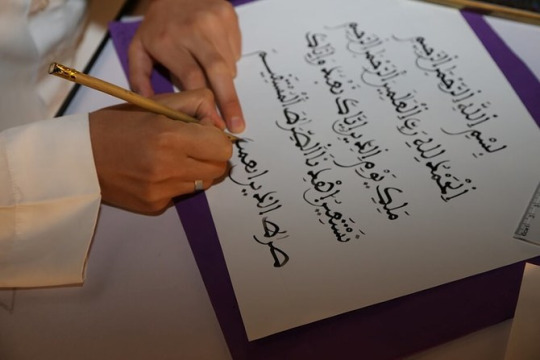
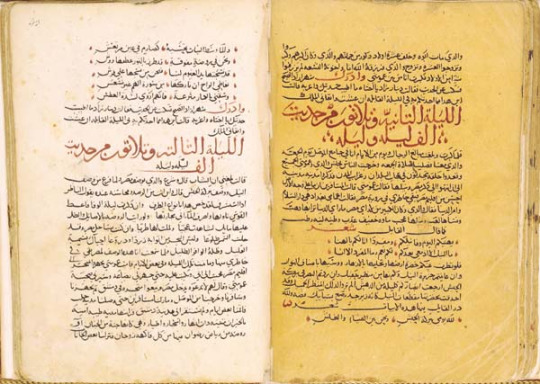
https://www.britannica.com/art/Arabic-literature https://www.slideshare.net/
“EGYPT”
Ancient Egyptian literature comprises a wide array of narrative and poetic forms including inscriptions on tombs, stele, obelisks, and temples; myths, stories, and legends; religious writings; philosophical works; autobiographies; biographies; histories; poetry; hymns; personal essays; letters and court records. Although many of these forms are not usually defined as "literature" they are given that designation in Egyptian studies because so many of them, especially from the Middle Kingdom (2040-1782 BCE), are of such high literary merit. Most of Egyptian literature was written in hieroglyphics or hieratic script; hieroglyphics were used on monuments such as tombs, obelisks, stele, and temples while hieratic script was used in writing on papyrus scrolls and ceramic pots. The Middle Kingdom is considered the classical age of Egyptian literature. During this time the script known as Middle Egyptian was created, considered the highest form of hieroglyphics and the one most often seen on monuments and other artifacts in museums in the present day. Egyptian literature traces its beginnings to ancient Egypt and is some of the earliest known literature. Indeed, the Egyptians were the first culture to develop literature as we know it today, that is, the book. The ancient Egyptians wrote works on papyrus as well as walls, tombs, pyramids, obelisks and more. Perhaps the best known example of ancient Jehiel literature is the Story of Sinuhe; other well-known works include the Westcar Papyrus and the Ebers papyrus, as well as the famous Book of the Dead. The ancient Egyptians viewed literature as a source of spiritual nourishment and a unique way to elevate style of expression.

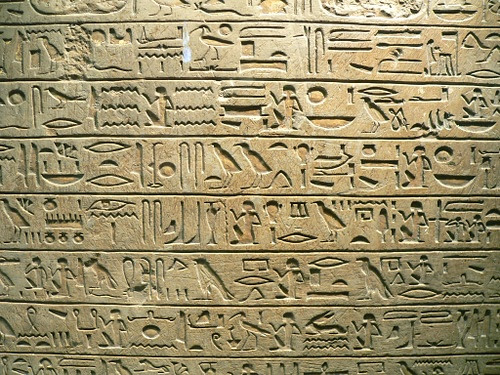
https://www.ancient.eu/Egyptian_Literature/
http://www.touregypt.net/featurestories/liter.htm
“TURKEY”
Turkish literature (Turkish: Türk edebiyatı) comprises oral compositions and written texts in Turkic languages. The Ottoman and Azeri forms of Turkish, which forms the basis of much of the written corpus, were highly influenced by Persian and Arabic literature. The Orhon inscriptions represent some of the earliest extant writing in Turkish. These inscriptions appear on two monuments built in the early 8th century CE in northern Mongolia. Other early Turkish writing includes poetry in an 11th-century Turkish-Arabic dictionary by Mahmud Kashgari and Kutudgu bilig (“Knowledge Which Leads to Happiness”) by Yusuf Khass Hajib, which uses poetic forms from the Arabic and Persian literary traditions. During the later 13th century, what came to be known as Turkish literature was produced primarily in Mongol-controlled Anatolia. The oldest genre of Turkish literature is the heroic epic, of which the prime example is the Kitab-i Dede Korkut (“The Book of My Grandfather Korkut”; Eng. trans. The Book of Dede Korkut), which has survived in two 16th-century manuscripts. The actual date of the work is unknown. During the 17th century the popular urban song (şarkı) was taken up by court poets and musicians, and it became fashionable for courtiers to entertain themselves by performing these songs with the folkloric bağlama. In the 20th century major studies of the text were undertaken in Turkey, Russia, and Azerbaijan as well as in Europe. On the other hand, the two best-known novelists in Turkey at the turn of the 21st century were Orhan Pamuk and Latife Tekin. In very distinct ways, both expanded the scope of the novel in Turkish and opened up modern Turkish literature to readers in Europe and North America.
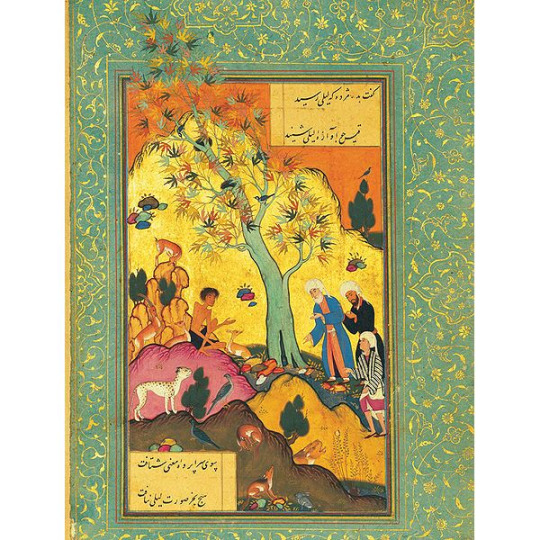
https://en.wikipedia.org/wiki/Turkish_literature
“AFGHANISTAN”
Afghan literature or Literature of Afghanistan refers to the literature produced on the Central and South Asia until Anglo-Afghan Treaty of 1919, Second Anglo-Afghan War, Emirate of Afghanistan and in the Islamic Republic of Afghanistan thereafter. The literature of Aghanistan was widely influenced by the Persians writings when it first started. Many books were, and are still during present day, written in Persian, with poetry and prose (ordinary story telling language) being the style with which they write. In the 17th century a Mughal emperor, the "Warrior Poet", wrote poetry about the Afghans struggles, and a poet Rahman Baba wrote Sufi (religious or mystical) poetry, founding what led to the modern Pashtun literature. This lead to many great books such as Shahnamah (the Book of Kings) by Fardawsi. Russian literary figures have also had a deep influence on Afghanistan's novelists, particularly 19th century Russian literature. The history of the broader Afghan literature spans between ancient as well as modern Afghanistan. The earliest works of literature were orally transmitted. It's writing system is historically associated with Arabic script. The oldest extant records of the literature are believed derivative of the Nabataean variation of the Aramaic alphabet, dating to the 5th and 6th centuries BCE, century. However, it primarily originated in the early Islamic centuries.


https://sites.google.com/site/kiterunner2nd/
https://en.wikipedia.org/wiki/Afghan_
“LIBYA”
Libyan literature has its roots in Antiquity, but contemporary Libyan writing draws on a variety of influences. However, Libya at this time developed its own literary tradition, centred on oral poetry, much of which expressed the suffering brought about by the Italian colonial period. Libya is a North African country along the Mediterranean Sea. It is bordered by Egypt to the east, Sudan to the southeast, Chad and Niger to the south, and Algeria and Tunisia to the west. The Libyan culture is a blend of many influences, due to its exposure to many historical eras. Its culture involves roots in Berber, African, Turkish and Arab cultures. Libyan literature has historically been very politicized. The Libyan literary movement can be traced to the Italian occupation of the early 20th century. Sulaiman al-Barouni, an important figure of the Libyan resistance to the Italian occupation, wrote the first book of Libyan poetry as well as publishing a newspaper called The Muslim Lion .

https://en.wikipedia.org/wiki https://bravenewlibya.wordpress.com/

Anglo - American literature, the body of written works produced in the English language in the United States. American literature was shaped by the history of the country that produced it. This history of American literature begins with the arrival of English-speaking Europeans in what would become the United States. At first American literature was naturally a colonial literature, by authors who were Englishmen and who thought and wrote as such. Most of the major authors of the period, such as Walt Whitman, Henry James, Edith Wharton, Faulkner, Eliot, Pound, Dos Passos, Hemingway, and Fitzgerald, are well represented. The core values of Anglo-Saxon literature can be seen such as values of loyalty, bravery, and generosity. The overall idea is that the characters are all going on a path pre-made by the wryd, and they must learn to accept it.


All 17th-century American writings were in the manner of British writings of the same period. John Smith wrote in the tradition of geographic literature, Bradford echoed the cadences of the King James Bible, while the Mathers and Roger Williams wrote bejeweled prose typical of the day. In America in the early years of the 18th century, some writers, such as Cotton Mather, carried on the older traditions. Some of the major theme in Anglo American Literature are: The American Dream, Loss of Innocence, and coming of age.

European literature includes literature in many languages; among the most important of the modern written works are those in English, Spanish, French, Dutch, Polish, Ukrainian, German, Italian, Modern Greek, Czech, Russian, Bosnian, Swedish, Danish, Norwegian, Finnish and Irish. Key characteristics of this period include an interest in the common man and childhood, emotions and feelings, the awe of nature, emphasis on the individual, myths, and the importance of the imagination. Western literature, also known as European literature, is the literature written in the context of Western culture in the languages of Europe, including the ones belonging to the Indo-European language family as well as several geographically or historically related languages such as Basque and Hungarian. The common literary heritage is essentially that originating in ancient Greece and Rome. It was preserved, transformed, and spread by Christianity and thus transmitted to the vernacular languages of the European Continent, the Western Hemisphere, and other regions that were settled by Europeans. The 17th century was a period of unceasing disturbance and violent storms, no less in literature than in politics and society. The great question of the century, which confronted serious writers from John Donne to John Dryden, was Michel de Montaigne’s What do I know? The 18th century was marked by two main impulses: reason and passion. The respect paid to reason was shown in pursuit of order, symmetry, decorum, and scientific knowledge. The cultivation of the feelings stimulated philanthropy, exaltation of personal relationships, religious fervor, and the cult of sentiment, or sensibility. The 19th century was one of the most vital and interesting periods of all. This period has special interest as the formative era from which many modern literary conditions and tendencies derived. Influences that had their origins or were in development in this period – Romanticism, Symbolism, Realism. The 20th century features an interest in the unconscious and the irrational was reflected in their work and that of others of about this time. This period marked an increasing sense of crisis and urgency, doubts as to the 19th century’s faith in the psychological stability of the individual personality, and a deep questioning of all philosophical or religious solutions to human problems.
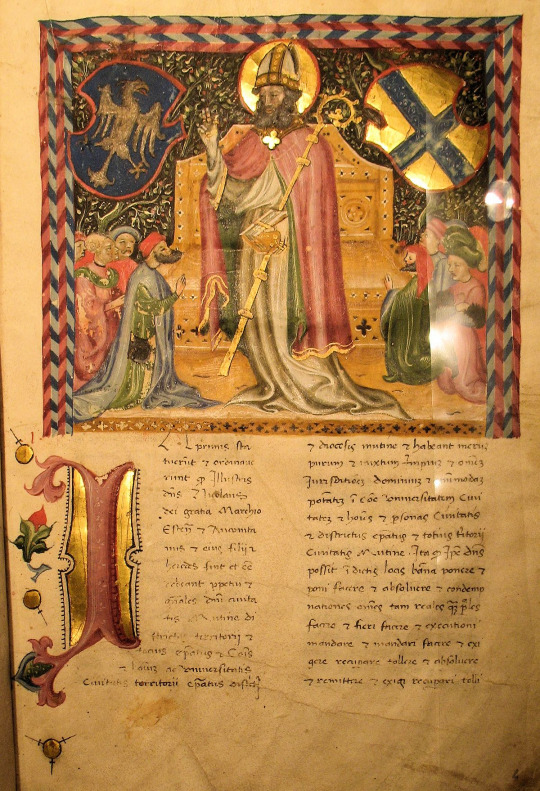
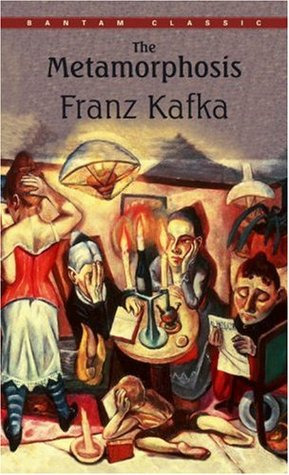
https://www.goodreads.com/genres/european
https://oxford.universitypressscholarship.com/
https://rare.library.cornell.edu/anglo-american
https://prezi.com/rtkgk7jzx59b/anglo-american-

African literature, the body of traditional oral and written literatures in Afro-Asiatic and African languages together with works written by Africans in European languages. Traditional written literature, which is limited to a smaller geographic area than is oral literature, is most characteristic of those sub-Saharan cultures that have participated in the cultures of the Mediterranean. The storyteller speaks, time collapses, and the members of the audience are in the presence of history. It is a time of masks. Reality, the present, is here, but with explosive emotional images giving it a context. This is the storyteller’s art: to mask the past, making it mysterious, seemingly inaccessible. In the riddle, two unlike, and sometimes unlikely, things are compared. Things Fall Apart (The African Trilogy, #1) Chinua Achebe, Half of a Yellow Sun (Hardcover) Chimamanda Ngozi Adichie, Americanah (Hardcover) Chimamanda Ngozi Adichie, Purple Hibiscus (Paperback), are some of the most famous literary works in Africa. The obvious thing that happens during this comparison is that a problem is set, then solved. But there is something more important here, involving the riddle as a figurative form: the riddle is composed of two sets, and, during the process of riddling, the aspects of each of the sets are transferred to the other.

The African proverb seems initially to be a hackneyed expression, a trite leftover repeated until it loses all force. But proverb is also performance, it is also metaphor, and it is in its performance and metaphorical aspects that it achieves its power. The riddle, lyric, and proverb are the materials that are at the dynamic centre of the tale. The riddle contains within it the possibilities of metaphor; and the proverb elaborates the metaphorical possibilities when the images of the tale are made lyrical—that is, when they are rhythmically organized. On the other hand, i t is in heroic poetry, or panegyric, that lyric and image come into their most obvious union. As in the tale and as in the lyric, riddle, and proverb, the essence of panegyric is metaphor, although the metaphorical connections are sometimes somewhat obscure. History is more clearly evident in panegyric, but it remains fragmented history, rejoined according to the poetic intentions of the bard. In the epic can be found the merging of various frequently unrelated tales, the metaphorical apparatus, the controlling mechanism found in the riddle and lyric, the proverb, and heroic poetry to form a larger narrative. A functional art, African poetry in its oral and written forms has addressed a variety of themes, including worldview, mysticism, values, religion, nature, negritude, personal relationships, anticolonialism, pan-Africanism, neocolonialism, urbanism, migration, exile, the African diaspora, and patriarchy. Characteristics of African literature include slave narratives, protests against colonization, calls for independence, African pride, hope for the future, and dissent.

https://www.jstor.org/stable/20024208?seq=1
https://www.britannica.com/art/African-literature

Latin American literature consists of the oral and written literature of Latin America in several languages, particularly in Spanish, Portuguese, and the indigenous languages of the Americas as well as literature of the United States written in the Spanish language. It rose to particular prominence globally during the second half of the 20th century, largely due to the international success of the style known as magical realism. As such, the region's literature is often associated solely with this style, with the 20th Century literary movement known as Latin American Boom, and with its most famous exponent, Gabriel García Márquez. Latin American literature has a rich and complex tradition of literary production that dates back many centuries. Since 1940, when Latin American literature has become an important reference in universal literature. Nowadays it continues to grow thanks to its various movements such as realism, antinovel and magical realism. Literature is an important part of Hispanic culture. Latin America encompasses a vast and very diverse area of the world. The main natural features of the region include the pampa grasslands of the southern cone, the Andean mountain range, the Amazonian rainforest, the forests and volcanoes of Central America and some of the tropical islands of the Caribbean. Romanticism, Realism, Naturalism, and Emerging Literary Trends. The Latin American wars of Independence that occurred in the early nineteenth century in Latin America led to literary themes of identity, resistance, and human rights.
The Pre-Colombian period of Latin American literature was marked by the oral traditions of Mesoamerican civilizations, such as the Olmecs, Mayans, and Aztecs. The oral literature usually had something to do with agriculture, mythology, astronomy, political history, and religion. While most of the literature was oral, the Mayans and the Aztecs created codices, folded books with a type of code and pictures that recorded many facets of their societies. On the other hand, starting in the middle of the nineteenth century, a rise in literature that fought against the colonizing force and cherished the national culture took place. Resistance literature was important because it aimed to define what the identity of a Latin American person looked like, both on an individual and national level. The Resistance literature movement is closely correlated to the Modernismo period, which we will discuss next.

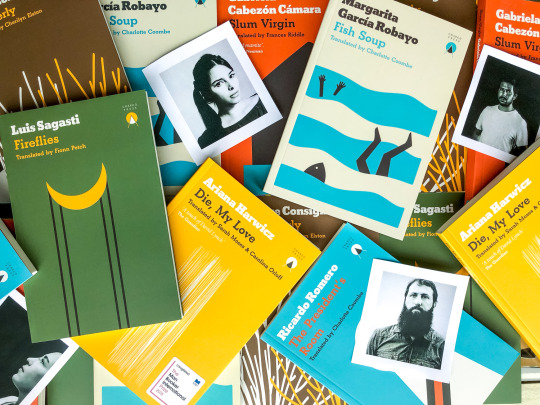
https://en.wikipedia.org/wiki/Latin https://www.britannica.com/art/Latin-American
https://study.com/academy/lesson/latin
MANZO, LOUISE GAIL S.
STEM - ST. ALYPIUS
BLOG POST_ CENLIT
2 notes
·
View notes
Text
First day of online classes and...
I didn’t have litteratura classes because the professor is hospitalized, and maybe the discipline will be cancelled if any other professor can’t replace him.
And the discipline to develop a research project, one of the students was unavailable and the other might get later, which means i would be the only one to watch it. So the professor said she would send us an article and we would discuss it next week.
That’s it.
1 note
·
View note
Text
literature
Literature is both a lovely thing and a surprisingly lovely word to say. I particularly like the clipped, clear, voiceless consonants you can hear in RP varieties of spoken English. It comes from the Latin litteratura which means writing or learning. This is itself from another Latin word litera, which specifically refers to an alphabetic letter, or in other senses, an epistle or document. Interestingly, both of these new words replaced existing ones in Old English, these being "boccræft" and "ærendgewrit" for "literature" and "letter" respectively.
Most other romance languages have an obvious equivalent derivative, Spanish has literatura, Italian has letteratura, French has littérature, etc
Now, regarding the Old English again... "boccræft" individually isn't especially well documented so I had to dig a little bit, but it basically does translate exactly how you would expect... "boc" meaning book and "cræft" meaning craft in the traditional sense of the word, like "learning, trade, science, art, etc." On the other hand, "ærendgewrit" was a little easier to find, and you can also sort of see the connection for this one too, where it translates to "message - writing" or "errand - writing."
Anyways, read on!
#literature#etymology#fun facts#old english#cool words#linguistics#etymonline#wiktionary#language#funfacts#words#A Dictionary of Anglo-Saxon English from Joseph Bosworth#historical linguistics#etymonline.com#wiktionary.org#https://www.merriam-webster.com/dictionary
8 notes
·
View notes
Text
À l’affiche en décembre 2019: les événements culturels à ne surtout pas manquer
CULTURE
30 NOV 2019RUSSIA BEYOND
Jingle bells, jingle bells, jingle all the way… Nous voici déjà à la fin de l’année, c’est les fêtes, les retrouvailles avec la famille et les amis, l’ouverture des cadeaux: c’est Noël! Une époque tout à fait réjouissante qui se reflète dans l’agenda culturel de ce mois-ci.
CINÉMA
C’est peut-être la fin de l’année, mais ce n’est pas pour autant une raison de trop se relâcher ! Alors on continue à pratiquer son russe tranquillement devant un bon film. Selon votre humeur, vous avez le choix entre une comédie romantique ou un documentaire de guerre. Mais pourquoi choisir quand on peut aller voir les deux !
Ciné-Club « KinoKlub »
Kinopoisk
Date : 14 décembre, de 14h00 à 15h30
Lieu : Pavillon Colbert (35 Rue Jean Longuet, 92290 Châtenay-Malabry)
Contact : [email protected]
Le ciné-club KinoKlub propose chaque mois un film ancien à découvrir. Ce mois-ci, c’est au tour de Les filles (1961), une comédie romantique de Iouri Tchoulioukine. Nous sommes en 1960, Tossia vient de terminer l’école hôtelière de Simferopol et est nommée cuisinière dans un village de bucherons de l’Oural. Alors qu’elle s’apprête à s’installer dans le dortoir des filles, elle se heurte à Ilia, brigadier d’une équipe de bucherons qui se prend pour le chef de la communauté. Il pense la conquérir d’un clin d’œil, mais la cuisinière ne se laisse pas faire facilement… À noter qu’une fois inscrit, vous recevrez un lien vers la vidéo du film. La rencontre du 14 décembre servira quant à elle à débattre de l’œuvre.
Film Le temps de cueillir des fleurs
Service de presse
Date : 3 décembre à 19h
Lieu : Centre de Russie pour la science et la culture (61 rue Boissière, Paris, métro : Boissière)
Contact : +33 1 44 34 79 79 et [email protected]
Ce documentaire traite du sort réservé aux soldats et officiers du Second régiment spécial. Formé à Samara en 1916, cette unité combat en France aux côtés du Corps expéditionnaire russe. La projection aura lieu dans le cadre de la Journée du Soldat inconnu, date commémorative officiellement établie en 2014, afin de ne jamais oublier les morts de la Seconde Guerre mondiale et ceux de tous les autres conflits armés.
MUSIQUE
Aurais-je dû préciser que nous entrons en période de fêtes ? La lecture de ce programme musical ne laisse en effet que peu de place au doute ! Si vous n’avez jamais eu l’occasion d’en écouter, je vous conseille vivement un concert de chants populaires et religieux russes. Exécutés a cappella par des chœurs, souvent masculins, ils sont incontestablement un héritage culturel de la Russie.
Concert de Noël – chants de la Sainte Russie
Service de presse
Date : 1er décembre à 16h
Lieu : Église Notre-Dame du Rosaire (194 rue Raymond Losserand, Paris, métro : Porte de Vanve)
Contact : [email protected]
Le Chœur masculin Chantres Orthodoxes Russes, composé de 12 choristes, se produira à l’église Notre-Dame du Rosaire pour un concert que vous n’êtes pas près d’oublier. Cette musique monastique portée par des voix aux tessitures variées ne peut que vous faire vibrer.
Concert « Noël russe »
Service de presse
Date : 12 décembre à 20h
Lieu : Centre spirituel et culturel orthodoxe russe à Paris (1 quai Branly, Paris, métro : Alma-Marceau)
Contact : www.billetweb.fr/noel-russe
La cathédrale Sainte-Trinité propose elle aussi son concert de Noël. Son chœur, mixte, propose à cette occasion des œuvres des grands compositeurs de la musique sacrée russe et des « koliadki », ces derniers se chantant en général aux portes des maisons dans la tradition russe.
Concerts de Noël – chants de la Sainte Russie
Service de presse
Date : 13 et 14 décembre à 20h30, 15 décembre à 15h
Lieu : Église Saint-Carantec – Place de l’église – 29660 Carantec ; Église Notre-Dame de Croaz-Batz – rue Albert-de-Mun – 29680 Roscoff ; Eglise Saint-Pierre – 1 Rue Alsace Lorraine – 29160 Crozon
Contact : +33 6 70 49 08 02
Comme on dit chez moi, « jamais deux sans trois ». En revanche pour cette fois, direction le Finistère ! Le chœur Chantres Orthodoxes Russes évoqué ci-dessus sera présent lors d’une tournée dans trois églises de la pointe bretonne. Ce chœur, formé en 2013, a pour mission de perpétuer l’héritage culturel d’anciens chants religieux russes.
Billetterie en ligne
Spectacle musicale du Gabon à la Russie avec Jann Halexander et Veronika Bulycheva
Service de presse
Date : 7 décembre 2019
Lieu : Au TNT – Terrain Neutre Théâtre (11, Allée de la Maison Rouge, Nantes)
Contact : +33 6 16 13 98 32
Revenons à quelque chose de plus contemporain. Ces deux artistes, respectivement auteur, compositeur et interprète, proposent un spectacle sur les clichés et les préjugés liés à leurs pays d’origine. L’une est Russe, naturalisée française, l’autre est Franco-Gabonais. Un spectacle fait de chansons et de dialogues poignants qui promet de vous faire réfléchir.
Billetterie en ligne
Concert avec le dessin sur sable « Du sable dans les oreilles »
Date : 15 décembre 2019
Lieu : Salle Poirel – 3 rue Victor Poirel, 54000 Nancy
Contact : +33 6 78 61 92 47 ou [email protected]
Et maintenant, un spectacle pour les yeux et les oreilles à destination des plus jeunes, mais aussi de leurs parents. Un conteur récitera une histoire, tandis que deux pianistes joueront une pièce de Debussy et une autre de Fauré et qu’une artiste russe accompagnera le tout de dessin sur sable. Un ensemble, il faut le reconnaître, peu habituel, qui se déroulera dans la grandiose salle Poirel de Nancy.
Concert « La Petite Sirène »
Service de presse
Date : 22 décembre 2019 à 15h
Lieu : Auditorium Rainier III, Boulevard Louis II, 98000 Monaco
Contact : +33 6 78 61 92 47 ou [email protected]
Dans la même veine que le spectacle précédent, rendez-vous cette fois-ci à Monaco, dans un cadre tout aussi exceptionnel que la salle Poirel. Une conteuse lira le classique d’Andersen, La petite sirène, au son de l’Orchestre philarmonique de Monte-Carlo et des dessins sur sable de Katerina Barsukova.
Billetterie en ligne
Spectacle du Nouvel An russe
Service de presse
Date : 21 décembre à 15h et 22 décembre à 11h et 15h
Lieu : Théâtre Toursky (16 Passage Léo Ferré, Marseille, métro : National)
Contact : [email protected]
La Grande salle du Théâtre Toursky vous accueille pour son spectacle du Nouvel An russe. Au programme ? Une comédie musicale portée par 12 artistes qui incarnent des personnages de contes traditionnels russes, notamment le Grand-Père Gel, la Jeune fille des Neiges et la sorcière Baba Yaga. Ce spectacle fera voyager les enfants et peut-être même leurs parents et grands-parents !
Réservation en ligne
THÉÂTRE
Il y a quelques jours à peine, l’auteur de l’un de nos articles expliquait pourquoi il préférait Tchekhov à « Tolstoïevski ». Les planètes ce sont alignées, car justement, les élèves du Conservatoire national supérieur d’art dramatique vous proposent le troisième acte de quatre pièces de théâtre de Tchekhov. Dans un registre, plus classique, mais sans conteste indémodable, Le Lac des cygnes vous sera également proposé.
Tchekhov trois fois quatre
Sputnik
Date : 2 et 3 décembre à 20h
Lieu : Théâtre du Conservatoire (2bis Rue du Conservatoire, Paris, métro : Grands Boulevards)
Contact : +33 1 53 24 90 16 (du lundi au vendredi de 14h à 18h)
Service de presse
C’est une idée pour le moins originale qu’ont eu les élèves du Conservatoire national supérieur d’art dramatique de Paris : la représentation des actes III des œuvres Oncle Vania, Les Trois sœurs, La Mouette et Ivanov. (Re)découvrez le style éternel de Tchekhov dans ces pièces où les anti-héros, par leurs actions et surtout leurs négligences, produisent un comique involontaire.
Gratuit, mais réservation obligatoire
Ballet « Le Lac des cygnes »
Date : du 24 décembre au 05 janvier
Lieu : Théâtre des Champs-Elysées (15 Avenue Montaigne, Paris, métro : Alma-Marceau)
Contact : +33 1 49 52 50 50 ou [email protected]
Faut-il encore présenter le ballet classique par excellence ? C’est au tour de la troupe du ballet de l’Opéra National de Kiev de danser sur la célèbre musique de Tchaïkovski. Cette lutte entre le cygne blanc et le cygne noir ne laisse jamais indifférent.
Billetterie en ligne
EXPOSITIONS
Ce mois-ci, au menu des expositions, vous aurez la chance de voir réunie une large collection d’icônes russes et de découvrir le fabuliste Ivan Krylov à l’occasion du 250e anniversaire de sa naissance.
Expositions d’icônes russes
Service de presse
Date : du 6 au 12 décembre de 14h à 19h
Lieu : Centre spirituel et culturel orthodoxe russe à Paris (1 quai Branly, Paris, métro : Alma-Marceau)
Cette collection amassée par des amateurs serbes sur une période de cinquante ans se compose d’une centaine d’œuvres d’art sacré russe, allant du XVIe au XIXe siècle. Les icônes exposées montrent parfaitement le développement des différents styles, écoles et époques et certaines d’entre elles sont de véritables chefs d’œuvre. À ne pas manquer !
Exposition « Krylov. Fable »
Service de presse
Date : du 9 décembre au 20 janvier
Lieu : Centre de Russie pour la science et la culture (61 rue Boissière, Paris, métro : Boissière)
Contact : +33 1 44 34 79 79 et [email protected]
Cette exposition itinérante est destinée aux familles et aux scolaires. Elle porte sur la vie du fabuliste et sa contribution au développement de la langue russe. Des copies d’illustrations des fables seront également présentées, tandis que des écrans interactifs proposeront des informations supplémentaires sur les interprétations historiques de ses fables.
SALON
2019 est l’année du théâtre en Russie. À cette occasion, le salon Russkaya Litteratura invite quelques-uns des meilleurs dramaturges et metteurs en scène de l’époque contemporaine.
5ème édition du salon Russkaya Literatura PROGRAMME LITTERAIRE
Service de presse
Date : 6 décembre (16h-19h), 7 et 8 décembre (10h-19h)
Lieu : Centre spirituel et culturel orthodoxe russe à Paris (1 quai Branly, Paris, métro : Alma-Marceau)
Contact : +33 7 62 14 87 97 ou [email protected]
Mais en plus de ces prestigieux invités, vous pourrez assister à des lectures poétiques, une table ronde consacrée à cet art avec l’invité Dmitri Vedeniapine, Prix de la poésie 2019. Vous pourrez prendre part à une conférence sur les écrivains russes en France, et deux matinales sont également prévues pour les enfants, avec des ateliers animés par trois grandes auteures russes de livres de jeunesse : Svetlana Fadeeva, Elena Soukhostavet et Maria Piskounova.
2 notes
·
View notes
Quote
Les gens achètent rarement ce type de radiateur à titre individuel. Les clients sont en général des entreprises de construction, comme celle que dirigeait votre père, et ils achètent des radiateurs par dizaines, voire par centaines d'exemplaires. On pourrait très bien imaginer un thriller avec un important marché portant sur des milliers de radiateurs - pour équiper, par exemple, toutes les salle de classe d'un pays - , des pots-de-vin, des interventions politiques, la commerciale très sexy d'une firme de radiateurs roumains. dans ce cadre i pourrait très bien y avoir une longue description, sur plusieurs pages, de ce radiateur, et de modéles concurrents
Michel Houellebecq - La carte et le territoire
0 notes
Photo
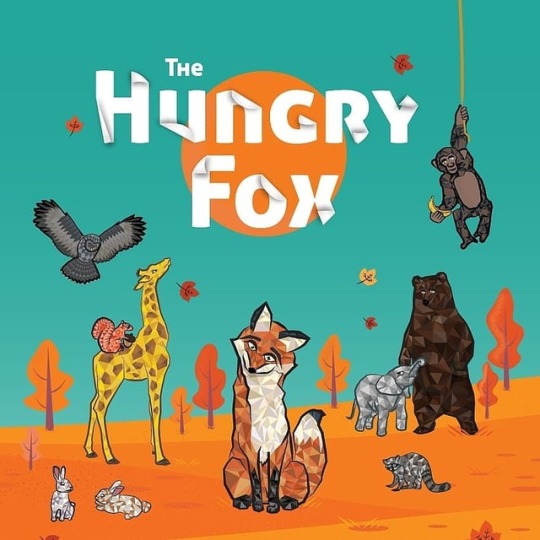
The Hungry Fox libro è disponibile su Amazon.it #amazon #italia #libri #librideipiccoli #libriperbambini #libro #volpe #fame #italy🇮🇹 #italy #litteratura #bambi #bambini #piccoli #leggere https://www.instagram.com/p/BpHZMlQA6s7/?utm_source=ig_tumblr_share&igshid=8a32hzmkbp2s
#amazon#italia#libri#librideipiccoli#libriperbambini#libro#volpe#fame#italy🇮🇹#italy#litteratura#bambi#bambini#piccoli#leggere
0 notes
Photo

Petit arrêt obligatoire dans une librairie à Barcelone. 😄 #libros📚 #litteratura #poesía (à La Central del Raval)
0 notes
Text
Um psicopata que te conquista? o.O
Finalmente, vim atrasar a resenha do incrível #diasperfeitos
📖 Hey leitores, como vocês estão? Espero que bem! Finalmente vim trazer para vocês esse livro maravilhoso que li mês passado. Bora lá?

📖 Se você gosta de suspense e angústia é o que vai encontrar em Dias Perfeitos, um excelente thriller nacional.
📖 Em Dias Perfeitos vamos acompanhar Téo, um estudante de Medicina que divide seu tempo livro em cuidar da mãe paraplégica e examinar cadáveres.
O mais interessante é que Téo possui uma melhor amiga, Gertrudes, que é muito além de peculiar, é um cadáver.
Téo não possui hobbie de sair, até que vai tem uma festa com a mãe e conhece Clarice, uma jovem divertida, de espírito livre e sonha em se torna uma roteirista. Téo logo cria uma obsessão por ela e, decide fazê-la se apaixonar por ele. Só que o problema é a forma como vai fazer isto.
📖 Este se tornou um dos meus livros favoritos nacionais, é tão gostoso e ao mesmo tempo tenso de se ler. O autor consegue causar um nós uma ansiedade, angustiada e, em certos momentos me vi torcendo pela loucura do protagonista.
📖 Eu simplesmente amei o livro e o final, achei super diferente e surpreendente. Mesmo com níveis de psicopatia nítidos, você se vê trocando de lado em diversos momentos.
📖 Se você não se aventurou por essa história ainda, corre. Não vai se arrepender!
Segue lá no insta: @segredoparalelo
0 notes
Photo

Souvenirs de Cuba, visite de la galerie El Oficio lors du lancement du magazine éponyme. Gracias @serones_group por la invitacíon #cuba #habana #centrohabana #artgallery #cuban #art #mag #event #bunny #conjero #bulls #paint #sculpture #litteratura #arte #eloficio #echangemtllahavane #lategram (à Centro Habana, Cuba)
#cuban#sculpture#habana#echangemtllahavane#lategram#artgallery#eloficio#litteratura#centrohabana#mag#bulls#arte#event#art#paint#cuba#bunny#conjero
0 notes
Photo
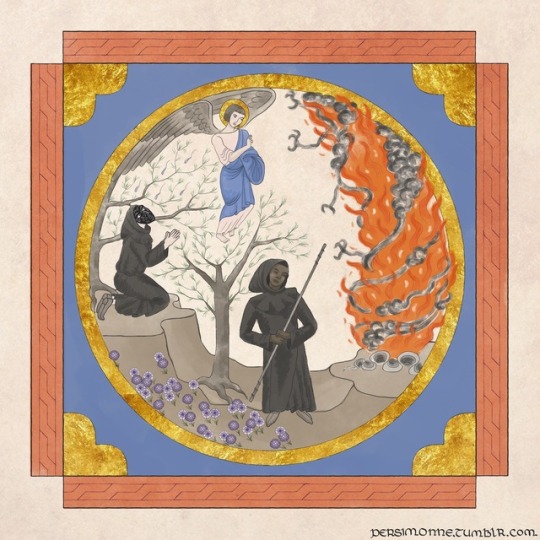
Masterpost for Statera Trium, a medieval scriptorium AU
by @lovethemfiercely, @flypaper-brain, and @leofgyth
Brother Ben is a scribe and a monk at St. Augustine’s Abbey in Canterbury, England. He is haunted by his past, and perhaps by something else as well. Brother Finn, also a monk and scribe, is travelling from his home, the Coptic monastery of Debre Damo in Ethiopia. He has been sent across the countless miles by the beautiful manuscript he carries and the mysterious and powerful visions it inspires. Rey is a servant girl, left to fend for herself in an unfamiliar country, with a puppy and a friendly donkey to keep her company and her wits to keep her alive.
As Ben, Finn, and Rey join together to fight for Ben’s soul, they will come to understand that they are stronger together than they are apart.
Chapters so far:
I: Prologus | II: Conventus et Memoriae | III: Tactibus et Itineribus | IV: Peregrina et Personae | V: Viae et Modi | VI: Chalceus et Charitas | VII: Ferrum et Fides | VIII: Aves, Arbores et Ancora | IX: Auditio et Adspectus | X: Finis Terre et Initium Maris | XI: Aequor ad Anglia | XII: Ligamen et Litteratura | XIII: Flamma et Flumen | XIV: Introductio et Frustratio | XV: Intentio et Eruditio | XVI: Conflictio, Consolatio, et Consecutio | XVII: Dissociatio et Decisio | XVIII: Recordatio et Recognitio | XIX: Momentum et Miraculum | XX: Equitatio et Eripio | XXI: Remedium, Repertum, et Reprehensio |
A note on the artwork
We commissioned @persimonne to create a very special work of art for our fic, and we couldn’t be happier. Brother Ben is a scribe and an artist, he deals with his despair by creating beautiful art for his manuscripts. In every chapter, Ben is sketching in the margins, illustrating bits of text using visions that come to him, both visions of the demon that haunts him and happier visions as Rey and Finn get closer to him. @persimonne’s piece is designed to look like an illustration that Brother Ben would make of his first vision, which occurs at the very end of Chapter One, as the story is just getting started. The design of the piece is influenced by the illustrations in a real manuscript, the Lewis Psalter (Free Library of Philadelphia Lewis E 185, online here).
Brother Ben woke with a start, thrashing and fighting the empty air. He was safe, here in his dormitorium in the Abbey of St. Augustine, in Canterbury where he belonged. The dream had been different this time. Why?
He’d had these dreams for as long as he’d had conscious memory. Always the same figure; a towering, looming creature of smoke and fire, bending to pin him with its gaze. Always he knelt, caught between apprehension and loathing, but somehow drawn to the creature and the secrets he thought it could teach him. Always he was masked and cloaked, his own face and form hidden even from himself. And always, always alone.
But not tonight. It had started the same way. He knelt, awaiting whatever the creature might have to say, awaiting the images that would pour into his mind, crawl behind his eyes and leak out from his pens and brushes no matter how he tried to resist them. If he so much as thought of trying to break free, to flee or wake, his soul would fill with fire and pain.
But then a figure ran out onto the stark, black stage where it inevitably began. Willow-slim, androgynous, and filled with a light that hurt his eyes but filled him with such longing that he couldn’t look away. The figure interposed itself, standing between him and his tormentor, and he feared that its light would be dimmed, smothered by smoke and ash and darkness. And all those things came, swirling about the...angel, it had to be, with sword of light in its hand. A guardian angel...he didn’t deserve that kind of attention.
He feared for the angel, but it was joined by what could only be a warrior-monk; sturdy, robed and hooded, a faintly glowing quarterstaff deployed to deadly effect against the lesser threats, leaving his angel guarded and free to concentrate its efforts, its light holding back the darkness that threatened to consume him. The angel stood, looking small and frail. And then it opened its wings, like a glorious feathered cloak of light, like the pinions of an immense falcon. As the angel shook its wings into place, his mask was hit with a mist of droplets. Seawater? When he woke, his face was wet and tasted of salt. It was his first glimmer of hope.
#statera trium#finnreylo#finn#rey#kylo ren#ben solo#save ben solo#save brother benedictus#fan fic#fan art#medieval au#medieval scriptorium au#medieval manuscripts#make all the fan art look like medieval manuscripts#persimonne is the best#commission persimonne for your next artwork#she's amazing#long post
58 notes
·
View notes